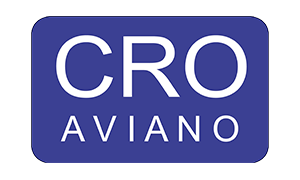Cutaneous Melanoma has an increasing incidence in the European Union, with an incidence rate of 13.0 cases per 100000 subjects and a 5-year prevalence of more than 300000 cases. It also displays a high mortality rate of 2.2/100000. Melanoma tumours shows a limited response to conventional therapies and exhibit remarkable heterogeneity in the disease course even in groups of patients with highly homogeneous clinicopathological characteristics. There is therefore an increasingly need for markers of cutaneous melanoma able to identify patients with increased risk of bad prognosis from patients with good prognosis. This, in order to provide the high risk group with differentiated therapeutic approaches and follow up and concomitantly avoiding side effects deriving from the unnecessary exposure to drug for the low risk group.
Having this focus, performing NGS sequence on laser capture microdissected tumour tissue, we found that genomic DNA methylation identifies patients with different prognosis within sub-stage IIIC as independent market. For instance, sorting the affected population by Long Interspersed Nucleotide Element-1 (LINE-1) sequence methylation status, we found that the percentage of survival drops to a median of 11.5 months in the hypermethylated group, with respect the hypomethylated group, in which the median percentage of survival is 31.9 months. Additionally, specific methylation profiles of other genes define survival expectancy of sub-stage IIIC melanoma patients. Hence, methylation markers are able to independently define prognosis of melanoma patients within the same sub-stage of disease. The prognostic value is maintained by methylation signatures composed of a limited number of genes (e.g., 17) and even by single selected genes.
Potential benefits can be sum up in the following list:
• Prognostic value, in term of survival forecast of affected subjects within the stage IIIC of the melanoma disease, is given by methylation signature of a panel of limited number of genes (17) and even by single selected ones.
• Far superior stability of DNA methylation markers in clinical samples as compared to RNA-based markers.
• Applicability to different types of biological samples, including archival FFPE tissues.
• High sensitivity of the assays.
• Potentially evaluable in serum/plasma to allow easy to run routine screenings.
• Robust technology (NGS based).
Current limitations regard: the required validation in a larger and independent sample of melanoma patients (at least 100 patients); potential applicability to liquid biopsy, in particular on circulating tumour cells (CTC) needs to be assessed; similarly, should be checked the possibility to use the tool as predictive outcome of immunotherapy in clinical trials.
Potential applications of the technology are as follows:
• Defining differentiated follow-up and therapeutic procedures according to the predicted prognosis/response to therapy of patients (increased efficiency of health care).
• Identifying patients candidates to personalized therapies (e.g., hypomethylating drugs, immunotherapies, targeted therapies).
• Improving staging of melanoma patients.
• Providing a strong parameter for the stratification and/or the randomization of patients included in clinical trials.
• Providing the basis for designing companion tests for new drugs.
Alessio Polacchini







